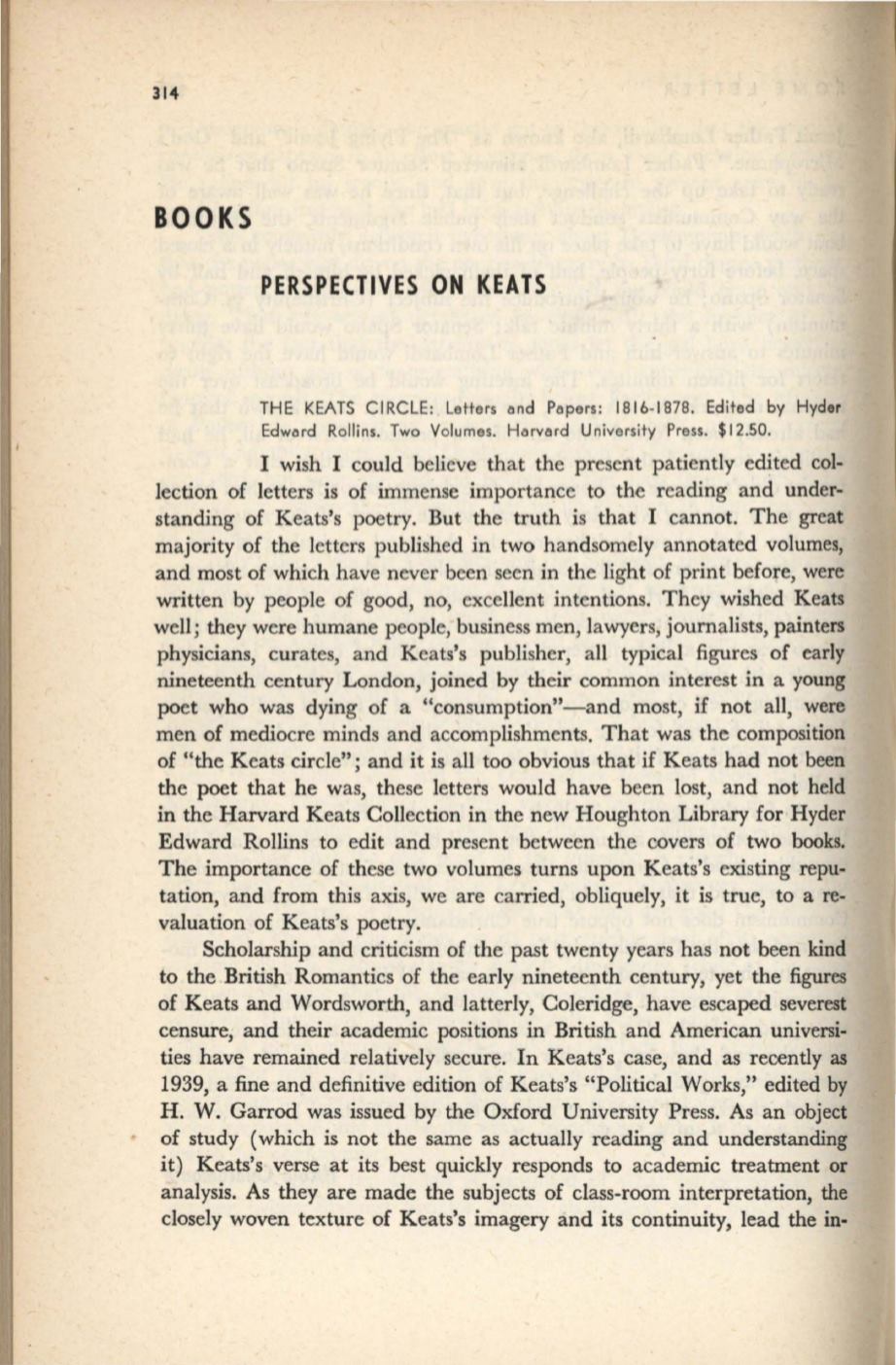
314
BOOKS
PERSPECTIVES ON KEATS
THE KEATS CIRCLE: Letters and Popers: 1816-1 878. Edited by Hyder
Edword Rollins. Two Volumes. Horvo rd Un iversity Press. $12.50.
I wish I could believe that the present patiently edited col–
lection of letters is of immense importance to the reading and under–
standing of Keats's poetry. But the truth is that I cannot. The great
majority of the letters published in two handsomely annotated volumes,
and most of which have never been seen in the light of print before, were
written by people of good, no, excellent intentions. They wished Keats
well; they were humane people, business men, lawyers, journalists, painters
physicians, curates, and Keats's publisher, all typical figures of early
nineteenth century London, joined by their common interest in a young
poet who was dying of a "consumption"-and most,
if
not all, were
men of mediocre minds and accomplishments. That was the composition
of "the Keats circle"; and it is all too obvious that
if
Keats had not been
the poet that he was, these letters would have been lost, and not held
in the Harvard Keats Collection in the new Houghton Library for Hyder
Edward Rollins to edit and present between the covers of two books.
The importance of these two volumes turns upon Keats's existing repu–
tation, and from this axis, we are carried, obliquely, it is true, to a re–
valuation of Keats's poetry.
Scholarship and criticism of the past twenty years has not been kind
to the British Romantics of the early nineteenth century, yet the figures
of Keats and Wordsworth, and latterly, Coleridge, have escaped severest
censure, and their academic positions in British and American universi–
ties have remained relatively secure. In Keats's case, and as recently as
1939, a fine and definitive edition of Keats's "Political Works," edited by
H. W. Garrod was issued by the Oxford University Press. As an object
of study (which is not the same as actuaIly reading and understanding
it) Keats's verse at its best quickly responds to academic treatment or
analysis. As they are made the subjects of class-room interpretation, the
closely woven texture of Keats's imagery and its continuity, lead the in-


